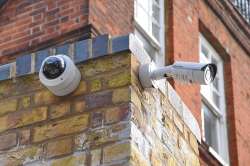A combination of multiple CCTV images could aid in catching suspects
A combining a multiple poor quality CCTV images into a single, computer-enhanced composite can help identify criminal suspects.

According to a new study, by combining a multiple poor quality CCTV images into a single, computer-enhanced composite would help in advancing the accuracy of facial recognition to identify criminal suspects.
The findings showed that both people and computer systems were better at identifying a face when viewing an average image that combined multiple pixelated images, compared to the original poor-quality images.
"We know that not all CCTV systems have the luxury of high quality cameras, meaning that face identifications are often being made from poor quality images. We have shown that there is a relatively quick and easy way to improve pixelated images of someone's face," said lead author Kay Ritchie from the Britain's University of Lincoln.
The researchers created a series of pictures using a 'face averaging' technique -- a method which digitally combines multiple images into a single enhanced image, removing variants such as head angles or lighting so that only features that indicate the identity of the person remain.
The findings have implications for law enforcement and security agencies where low quality pixelated images are often the only pictures of suspects available to use in investigations.
"We also know anecdotally that there are lots of different techniques that people can use as investigative tools to improve low-quality images, such as manipulating brightness," Ritchie said.
"Our standardised face averaging method could help in suspect identification from low-quality CCTV footage where images from multiple different cameras are available, for example, from tracking a suspect along a particular route," Ritchie added.
In the study, published in the journal Applied Cognitive Psychology, participants were asked to compare a high quality image with either a low quality pixelated image or one created using the image averaging method, and determine whether they depicted the same person or two different people.
The results showed that accuracy was significantly higher when viewing average combining pixelated images, rather than a single pixelated image.
The same test images were run through two separate computer recognition programmes, one a smart phone application, and the other a commercial facial recognition system widely used in forensic settings.
Both computerised systems showed higher levels of accuracy in identifying a person from average images.
(With IANS inputs)